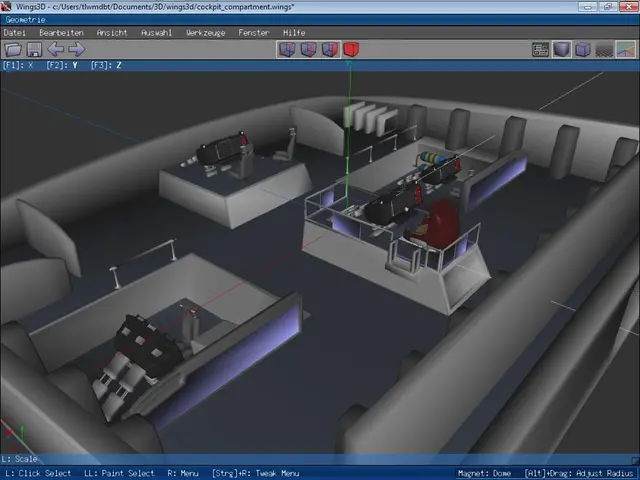Elevating Your Sound Mixing Game: A Deep Dive into EQ Settings
DJing's Transformative Journey Over Time
Welcome to the world of sound engineering! Today, we're diving deep into the art of mastering equalization (EQ) for that perfect blend in your mix. Here's your ultimate guide to setting up your EQ like a pro:
Comprehending EQ Types
To curate that distinctive mix, first, familiarize yourself with various EQ types:
- Graphic EQ: With fixed frequency bands, it caters to quick adjustments in live settings.
- Semi-Parametric EQ: It offers control over gain and bandwidth but lacks flexibility in frequency selection.
- Parametric EQ: Presenting the epitome of flexibility, it lets you tweak frequency, gain, and bandwidth like a maestro.
- Dynamic EQ: This reactive EQ helps to tame down harsh frequencies, smoothing out your mix.
EQ Settings for Common Music Elements
Now that you've grasped the basics, take a look at general EQ settings for popular instruments in your studio:
Vocals
- Sub-Bass (100-200 Hz): A trim to eliminate muddiness and enhance vocal clarity.
- Presence (5 kHz - 8 kHz): A boost to boost clarity and definition.
- Top-End (10 kHz - 15 kHz): A slight boost for an added dose of brightness and airiness.
Drums
- Bass Drum (60-80 Hz): A boost for amped-up low-end punch.
- Snare Drum (200 Hz - 250 Hz): A cut to declutter and boost at 5 kHz for improved clarity.
- Hi-Hats and Cymbals (10 kHz - 15 kHz): A slight boost for that sought-after brightness.
Guitars
- Acoustic Guitar (200 Hz - 250 Hz): A trim to declutter and a boost at 5 kHz for increased clarity.
- Electric Guitar (200 Hz - 250 Hz): A boost for that warm, rich tone followed by a trim at 5 kHz to banish harshness.
Bass
- Low-End (30 Hz - 60 Hz): A boost for that deep, rumbling bass response.
- Midrange (200 Hz - 250 Hz): A cut to minimize muddiness and deliver a clean slate.
Personalized EQ Presets
For headphones like the Sony WH-1000XM6, enthusiasts have created unique EQ presets such as the "Singapore Spring," emphasizing deep bass, crisp clarity, and an expansive soundstage:- Sub-Bass (31 Hz - 63 Hz): A boost for that pulsating bass response.- Mid-Bass (125 Hz): An adjustment to balance bass and mids.- Treble (8 kHz - 16 kHz): A boost at 8 kHz for instrument brightness and at 16 kHz for that extra airiness.[1][2]
Pro Tips
- Loudness Comparison: Ensure uniform volume while comparing EQ settings for fair assessments.
- Implicit Effects: Take note of both explicit (direct) and implicit (indirect) effects when making EQ adjustments.
- Experimentation: EQ is a highly subjective art, so experiment with various settings to craft the best mix for your production.[3][4]
Happy mixing, visionary sound engineers!
- A tech enthusiast might also venture into the realm of retro gaming, investing in vintage game consoles and retro games at recordhead.biz to complement their music gear and studio equipment.
- For vinyl record lovers, turntables can be a gadget worthy of their passion for music and technology, offering a unique and immersive entertainment experience.
- When taking a break from tweaking EQ settings for music, one could opt for a change of pace by exploring the world of sound with a new game, possibly uncovering hidden treasures in a digital environment.
- In the pursuit of the perfect sound mix, visionary sound engineers often eagerly await the unveiling of the latest technological advancements in music gear, studio equipment, and gadgets.
- With a dedicated studio set up, an enhanced arsenal of music gear, and a keen understanding of EQ settings, these sound engineers are uniquely positioned to create remarkable entertainment experiences that resonate with a global audience.







